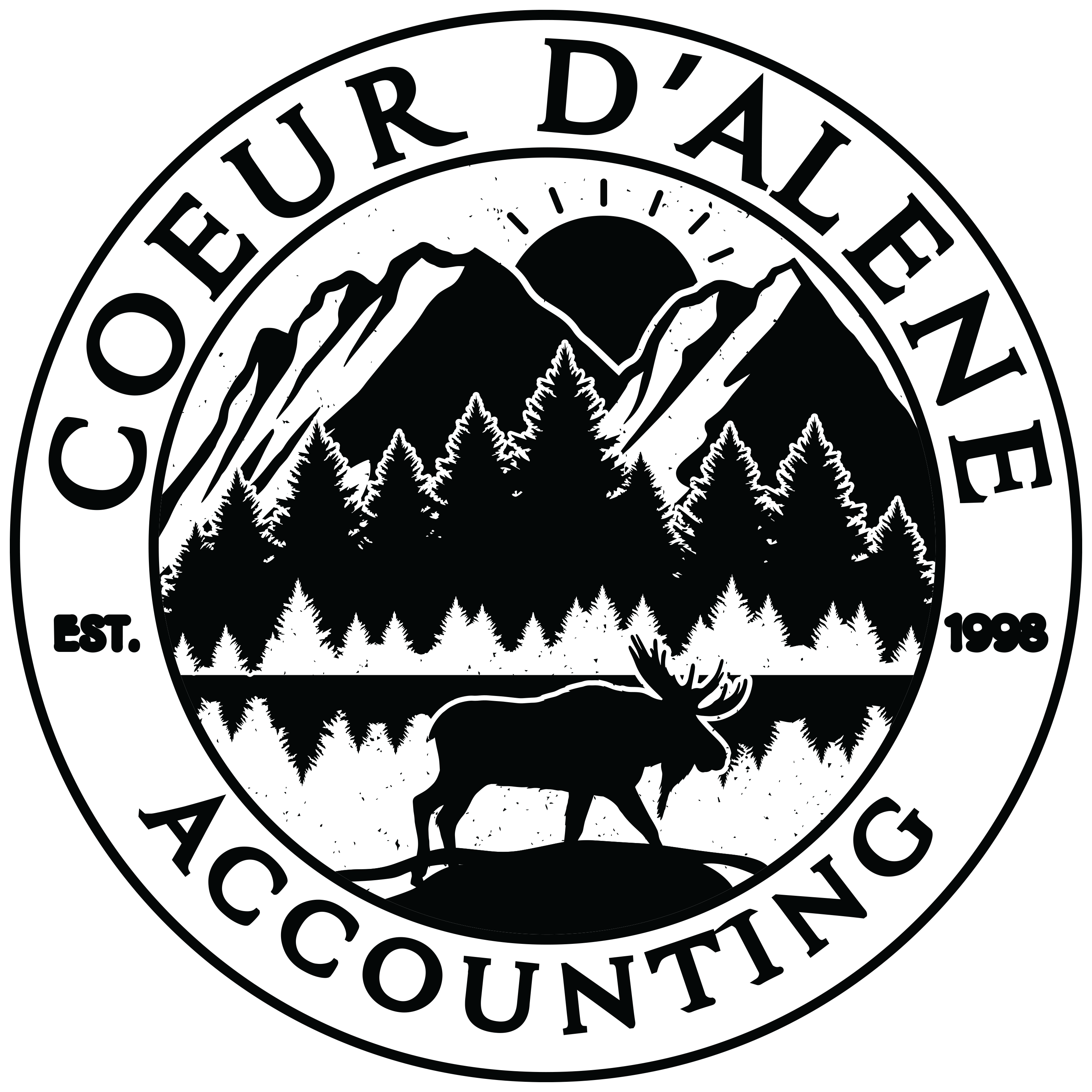
Coeur d’Alene real estate prices have cooled off as well as in many parts of the country.
In some areas, values are actually dropping after reaching all-time highs in the middle of last year.
Even so, Coeur d’Alene real property is still probably a wise investment over the long haul. But what about taxes? That’s always a question, right?
For tax reasons, you are generally well advised not to hold CDA real property in a corporation. LLCs and revocable trusts are usually better alternatives. But there’s one scenario where using an Idaho S corporation to own property can pay off tax-wise. We will explain.
C Corporation Ownership Exposes Double Taxation Threat
Holding depreciable real property or land in an Idaho C corporation is generally a bad idea from a tax perspective.
When you sell the property for a taxable gain (net sales proceeds in excess of the tax basis of the property), the gain could be taxed once at the corporate level and again at the shareholder level when the gain is distributed as all or part of a shareholder dividend.
This is the dreaded double taxation scenario.
Under our current federal income tax regime, double taxation is not as deadly as it was before the 2017 Tax Cuts and Jobs Act (TCJA). That’s because the TCJA permanently (we hope) installed a flat 21 percent corporate federal income tax rate. The 21 percent rate applies to all corporate taxable income, including gains from selling real estate.
For corporate dividends received by individuals, the TCJA retained the favorable 15 percent and 20 percent federal income tax rates. You might also owe the 3.8 percent net investment income tax (NIIT) on dividends. And you might owe state income tax too.
Not great! But the double taxation threat was much worse in the past. Before the TCJA, the maximum corporate federal income tax rate was 35 percent instead of the current 21 percent.
Before the so-called Bush tax cuts, corporate dividends received by individuals were taxed at ordinary income tax rates versus tax-favored capital gains rates as they are now.
Before the TCJA, ordinary income rates could reach 39.6 percent versus the current 37 percent maximum rate.
While the double taxation threat is diminished under the current federal income tax regime, our federal debt is now over $31 trillion and counting. At some point, the bleeding has to be stopped. So, there’s certainly a risk that (1) the corporate rate could be hiked and (2) dividends could once again be taxed at higher ordinary income rates.
Finally, the current 37 percent maximum individual rate on ordinary income is scheduled to revert to 39.6 percent when the TCJA individual rate regime sunsets after 2025. If these things happen, double taxation could once again be a deadly threat.
Key point. You can have a taxable gain when you sell depreciable real property even if the property has not gone up in value. That’s because depreciation deductions reduce the tax basis of the property. So, if your C corporation sells depreciable property for exactly what it cost, there will be a taxable gain equal to the cumulative depreciation deductions claimed over the years. And that gain could be hit with double taxation.
| Example: Double Taxation Illustrated
Your solely owned C corporation business needs a building. You set up a single-member LLC owned solely by you or a revocable trust to buy the property and lease it to the corporation. More on single-member LLCs and revocable trusts later. After a few years, you sell the property for a $500,000 gain. The entire gain will be taxed on your personal return. Part of the gain (the amount attributable to depreciation deductions) will be taxed at 25 percent. The balance will be taxed at no more than 20 percent under the current rate regime. You may also owe the 3.8 percent NIIT on all or part of the gain—and maybe state income tax too. Assume you pay a total of $130,000 to Uncle Sam for capital gains tax and the NIIT. Your after-tax profit is $370,000 ($500,000 – $130,000). We ignore any state income tax. Now let’s see what happens if your C corporation buys the same property. Under the current rate regime, the $500,000 gain will be taxed at the 21 percent corporate rate. The corporation pays the $105,000 federal income tax bill and distributes the remaining $395,000 to you (we ignore any corporate state income tax). Assume the $395,000 constitutes a dividend that will be taxed at the maximum 20 percent individual rate under the current federal tax regime. Plus, we assume you’ll owe the 3.8 percent NIIT on the $395,000 gain. So, the tax hit at your personal level is $94,010 ($395,000 x 23.8 percent). After paying federal income taxes at both the corporate and personal levels, your after-tax cash equals $300,990 ($500,000 – $105,000 – $94,010). Compare the $300,990 to the $370,000 you would receive under the single-member LLC/trust ownership alternative. Your after-tax cash is 23 percent higher with the single-member LLC or trust setup. Key point. As stated earlier, it’s not necessary for property held by a C corporation to actually appreciate in value for a taxable gain on sale and resulting double taxation to occur. The conclusion in this example would be the same if the entire $500,000 gain was caused by depreciation—although your personal tax bill would be a bit higher under the single-member LLC/trust ownership alternative due to the 25 percent federal rate on gains attributable to depreciation. Depreciation lowers the tax basis of the property, so a tax gain results whenever the sale price exceeds the depreciated basis. Conclusion. Don’t hold real property in a C corporation. The risk of adverse tax results is too high. That is especially true for depreciable property. |
The Single-Member LLC Option
An Idaho single-member LLC is an LLC with only one owner, who is called the “member.” Under the IRS’s so-called check-the-box entity classification regulations, you can generally ignore the existence of a single-member LLC for federal tax purposes.
The exceptions are
When you choose not to treat your single-member LLC as a corporation for federal income tax purposes, the single-member LLC has so-called disregarded entity status, which we will call a “disregarded single-member LLC.”
The federal income tax treatment of a disregarded single-member LLC is super simple, because its activities are considered to be conducted directly by the single-member LLC’s sole member. That would be you. So, when you use a disregarded single-member LLC to own real estate, you simply report the federal income tax results, including any gain on sale, on your Form 1040. You need not file a separate federal income tax return for the single-member LLC.
Take Advantage of an Idaho Single-Member LLC Liability Protection
Although you ignore a disregarded single-member LLC for federal income tax purposes, it is not ignored for general Idaho state-law purposes. Therefore, a disregarded single-member LLC will deliver to its sole member (that would be you) the liability protection benefits specified by the applicable state LLC statute. These liability protection benefits are usually similar to those offered by a corporation.
Bottom line. With a disregarded single-member LLC, you get super-simple tax treatment combined with corporation-like liability protection. And you don’t have to worry about the double taxation threat that would exist if you used a C corporation to own property.
The Revocable Trust Option
If real property will be owned solely by you, or only by you and your spouse, consider using a revocable trust to hold the property. Revocable trusts are also commonly called “grantor trusts,” “living trusts,” or “family trusts.”
Because you can terminate a revocable trust at any time, any property owned by the trust is considered (for federal tax purposes) to be owned by the grantor(s) of the trust: the individual or spouses who established the trust. That would be you.
When you use a revocable trust to own real estate, you simply report the federal income tax results, including any gain on sale, on your Form 1040. You need not file a separate federal income tax return for the trust, and there’s no double taxation threat.
If you and your spouse set up a revocable trust, it will typically continue to exist as such when the first spouse passes away. The surviving spouse becomes the grantor, and the trust’s existence continues to be disregarded for federal tax purposes. So, the surviving spouse’s Forms 1040 are prepared without regard to the trust.
The advantage of holding Coeur d’Alene property in a revocable trust is that probate is avoided if you pass away. The property will go to the beneficiary or beneficiaries of the trust—or to the surviving spouse, if applicable —with no muss and no fuss. In contrast, if you own property directly without a revocable trust, the probate process can be expensive and time-consuming.
Caveat. We are not a practicing real estate or family law attorney! Consult an attorney if you are interested in the revocable trust deal.
The Multi-Member LLC Option
Things get more complicated if you are a co-owner of CDA real property. You and the other co-owners are probably well advised to set up a multi-member Idaho LLC to hold the property.
Under the IRS’s check-the-box regulations, multi-member LLCs are treated by default as an Idaho partnership for federal income tax purposes—unless you elect to treat the LLC as a corporation. Under the default treatment, you must file an annual partnership federal income tax return on Form 1065—just as you would for a “regular” partnership.
The LLC’s tax results are allocated to the members, who are treated as partners for federal income tax purposes. The LLC issues an annual Schedule K-1 to each member to report that member’s share of the LLC’s tax results for the year.
Each member then takes those numbers into account on the member’s own return (Form 1040 for a member who is an individual). The LLC itself does not pay federal income tax, so there is no double taxation threat. This scheme is called “pass-through taxation.”
Key point. Beyond the advantage of pass-through taxation, the partnership taxation rules that multi-member LLCs are allowed to follow have several other advantages that we won’t go into here. We don’t want this article to turn into a book!
The S Corporation Option for Developing Land and Selling It Off
In one scenario, using an Idaho S corporation to hold real property can be a tax-saver. Like LLCs and partnerships, S corporations don’t pay federal income tax at the corporate level. They are pass-through entities, which means their tax numbers are passed through to their shareholders. Income and gains are taxed at the shareholder level.
Here’s the story on when using an S corporation to own CDA real property can be a major tax saver.
When a taxpayer subdivides, develops, and sells land, the taxpayer is generally deemed for federal income tax purposes to be acting as a dealer in real property who is selling off inventory (developed parcels) to customers.
That’s not good, because when you (an individual taxpayer) are classified as a dealer for tax purposes, all of your profit from land sales—including the part attributable to pre-development appreciation in the value of the land—is considered ordinary income.
So, that profit is taxed at your ordinary income federal rate, which under the current regime can be up to 37 percent. You may also owe the 3.8 percent NIIT, which can push the effective federal rate up to as high as 40.8 percent (37 percent + 3.8 percent).
Seeking a Better Tax Result
It would be much better if you could pay lower long-term capital gains rates on at least part of your land sale profit. The current maximum federal rate on long-term gains is 20 percent. With the 3.8 percent NIIT added on, the maximum effective rate is “only” 23.8 percent (20 percent + 3.8 percent). That’s a lot better than 40.8 percent.
Fortunately, there’s a way to qualify for favorable long-term capital gain treatment for the pre-development land appreciation, assuming you have really and truly held the land for investment.
But profits attributable to the later subdividing, development, and marketing activities will be considered higher-tax ordinary income collected in your capacity as a real property dealer. Oh well.
Since pre-development appreciation is often the biggest part of the total profit, however, you should be thrilled to pay “only” 20 percent or 23.8 percent on that piece of the action.
Form an S Corporation to Serve as Developer Entity
Form an Idaho S corporation. You can be the sole shareholder, or there can be other co-owners. You can be the sole owner of appreciated land, or there can be other co-owners. Sell the appreciated land to the Idaho S corporation for its pre-development fair market value.
This is a good option as long as
You—and the other shareholders, if applicable—will lose at most “only” 23.8 percent of your gain to Uncle Sam.
The Idaho S corporation then subdivides and develops the property and sells it off. The profit from those activities will be classified as ordinary income that’s passed through to you (and the other shareholders, if applicable) and taxed at your personal rates on your Form 1040.
The S corporation itself does not pay federal income tax, so the double taxation threat that afflicts C corporations is not a problem.
Even though part of your profit will be taxed at higher ordinary income rates, this is still a great tax-saving deal when the land is highly appreciated to start with.
To sum up: the S corporation developer entity strategy allows you to lock in favorable long-term capital gain treatment for the pre-development appreciation while paying higher ordinary income rates only on the additional profits from development and related activities. Again, that’s much better than paying higher ordinary income rates on the entire profit.5
Make Sure to Use an Idaho S Corporation
Make sure your developer entity is an S corporation rather than a controlled partnership or a controlled multi-member LLC that’s treated as a partnership for federal tax purposes. Why?
Because a little-known provision mandates high-taxed ordinary income treatment for gains from sales to a controlled partnership or a controlled LLC that’s treated as a partnership for tax purposes, when the asset in question is not a capital asset in the hands of the partnership or LLC.6
Since the land in your situation would be inventory and not a capital asset in the hands of a controlled partnership or LLC—the partnership or LLC would be classified as a dealer in real property—the sale to the partnership or LLC would result in high-taxed ordinary income for you.
Solution. Use an S corporation as the developer entity. Don’t use a controlled partnership or an LLC treated as a partnership. Also, don’t use a C corporation as the developer entity, because that could result in double taxation, as explained earlier.
Takeaways
As a general rule, don’t use a C corporation to own real property, because of the double taxation threat.
When owning real property for investment, single-member LLCs, revocable trusts, and multi-member LLCs are better alternatives from a tax perspective.
And don’t overlook this possibility: using an S corporation to develop raw land and sell off parcels can be a big tax saver in the right circumstances.


Recent Comments